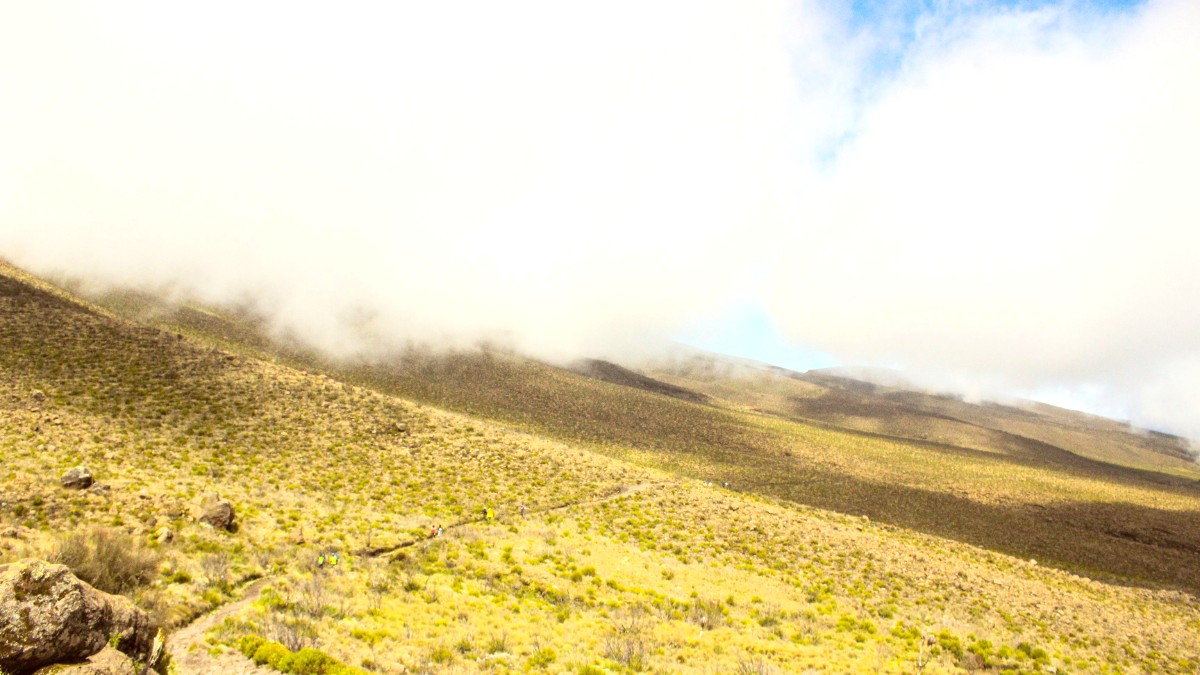
Tanzania
Temperatures change greatly with altitude. At the base, averages are 20-30°C (68-86°F). At 3,000 meters (9,800 feet), temperatures average 10-15°C (50-59°F). On the summit, night temperatures drop to -20°C to -29°C (-4°F to -20°F).
The mountain's weather is unpredictable. It changes rapidly regardless of the season. Strong winds occur at higher altitudes year-round. Glacial retreat continues, but summit glaciers remain.
Ideal Timing for Specific Activities or Experiences: For Kilimanjaro Trekking, the dry seasons (January to mid-March and June to October) are optimal for climbing. This is due to more stable weather and better visibility. February and September are often peak months within the dry seasons. For fewer crowds, late June and the first half of November feature a good balance.
January - Mid-March, June - October
Clearer skies, less rain, higher summit rates.
More crowded trails, higher prices for flights and accommodations.
December, Early March, November
Fewer crowds, potentially lower prices.
Variable weather; a mix of rain and sun is possible, trails may be less dry.
Late March - May
Few climbers, lower prices.
Heavy rainfall, muddy trails, low visibility, increased snow risk at higher altitudes.
Ordinary Visa (Single Entry): For tourism, holidays, visiting friends or relatives, or health treatment. This visa is valid for up to 90 days. Multiple Entry Visa: For individuals who need frequent visits for business or other purposes. Transit Visa: For individuals passing through Tanzania to another destination. It is valid for up to 7 days.
Online e-Visa: This is the most recommended method. Apply through the Tanzania Immigration Department website. Upload documents like a passport scan, photo, return ticket, and an invitation letter or tour operator confirmation. Processing takes 10-14 business days. It can be longer. Apply several weeks before your trip. Visa on Arrival (VoA): Available for citizens of some countries at major entry points, including Kilimanjaro International Airport (JRO). However, it faces long queues and is less predictable than the e-Visa. Embassy/Consulate: Apply in person or by mail at a Tanzanian embassy or consulate in your home country.
Six months beyond departure, two blank pages.
Digital for e-Visa, physical for VoA.
Completed visa application.
Copy of onward travel.
Hotel or tour booking.
Kilimanjaro trips have substantial costs. The climb package forms the majority of the expense. This package often covers park fees, guides, porters, cooks, food, water, and on-mountain accommodation. Prices vary based on operator reputation, chosen route, climb duration, and specific inclusions.
Currency: Tanzanian Shilling (TZS). Exchange Rate: Rates change often. Check current rates before travel, for example, by searching 'TZS to USD' online. Exchange: You can exchange major currencies like USD, EUR, and GBP at banks and authorized bureaus in Moshi and Arusha. ATMs are available in larger towns and at JRO. Credit Cards: Larger hotels and tour operators accept credit cards. Local shops or small purchases rarely accept them. USD: Tour operators accept USD for large payments, like the final climb balance or tips. Some higher-end establishments also take USD. Small denominations ($1, $5, $10, $20) benefit tipping and minor purchases. Ensure notes are clean, crisp, and printed after 2006 to avoid counterfeiting concerns.
Most standard climb packages include: park fees, expert guides, dedicated porters, skilled cooks, all meals on the mountain, and purified drinking water. They also include mountain accommodation (tents or huts). Transfer from/to JRO is typically covered.
Beyond the climb package, consider visa fees, travel insurance, and optional activities. Souvenirs and personal expenses also contribute to the total trip budget. Safari add-ons are separate.
Accommodation options near Kilimanjaro vary from luxury lodges to budget guesthouses. Most climbers stay in Moshi or Arusha before and after their climb. On the mountain, accommodation consists of tents on camping routes or basic huts on the Marangu route.
High-end lodges around Arusha and Moshi. Expect amenities like pools, fine dining, and spa services. Many feature stunning views of Kilimanjaro.
Spacious rooms, gourmet meals, personalized service.
Highest cost option, further from town centers.
Comfortable hotels in Moshi and Arusha with good facilities. Clean rooms, on-site restaurants, and reliable services are common. A popular choice for climbers.
Good value, comfortable stay, central locations.
Less luxurious, may lack unique features.
Basic, clean, and affordable accommodation. Common in Moshi and Arusha. Suitable for travelers focused on minimizing pre/post-climb expenses.
Cost-effective, simple amenities, local vibe.
Limited services, basic facilities.
| Route Type | Description | Amenities |
|---|---|---|
| Camping Routes (Machame, Lemosho, Rongai, Umbwe) | Dome tents for sleeping. Mess tents for dining. Portable toilets on some treks. | Basic shelter, sleeping pads, often private chemical toilets. |
| Hut Route (Marangu) | Communal wooden huts with bunk beds. No private bathrooms. | Shelter from elements, mattresses, communal dining areas. |
| Porter Tents | Separate tents for climb staff. | Basic shelter for team members. |